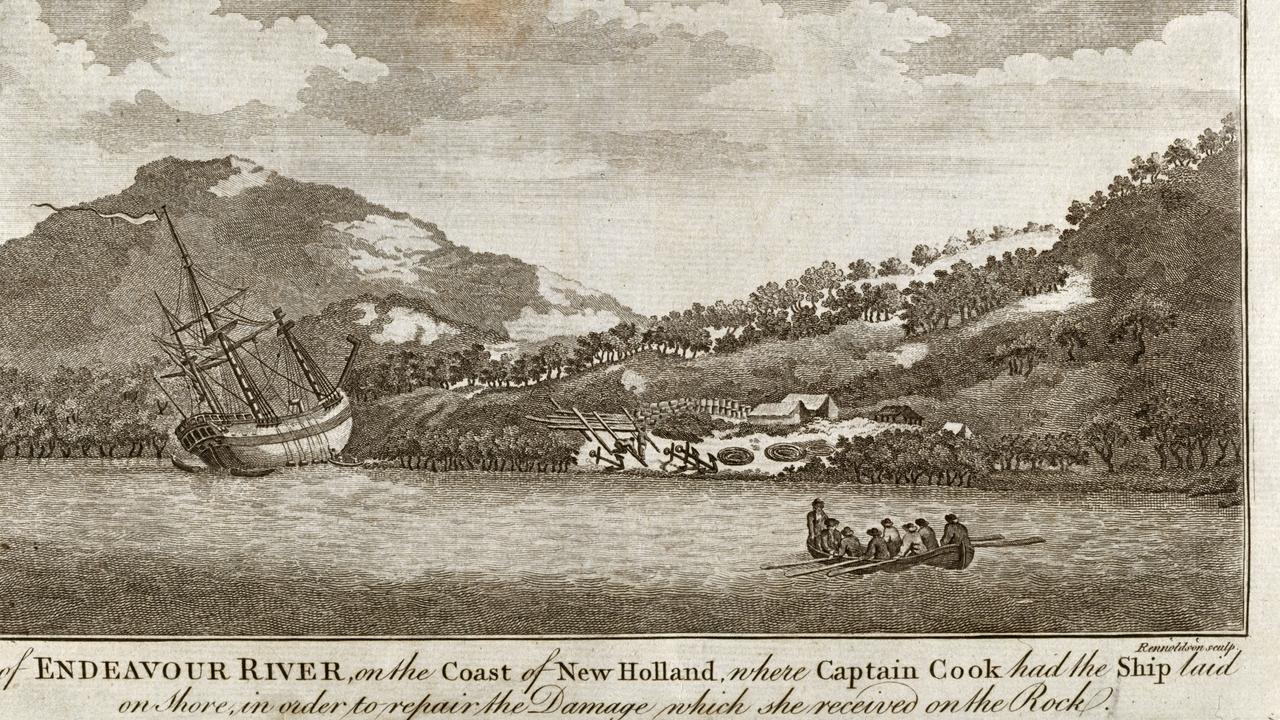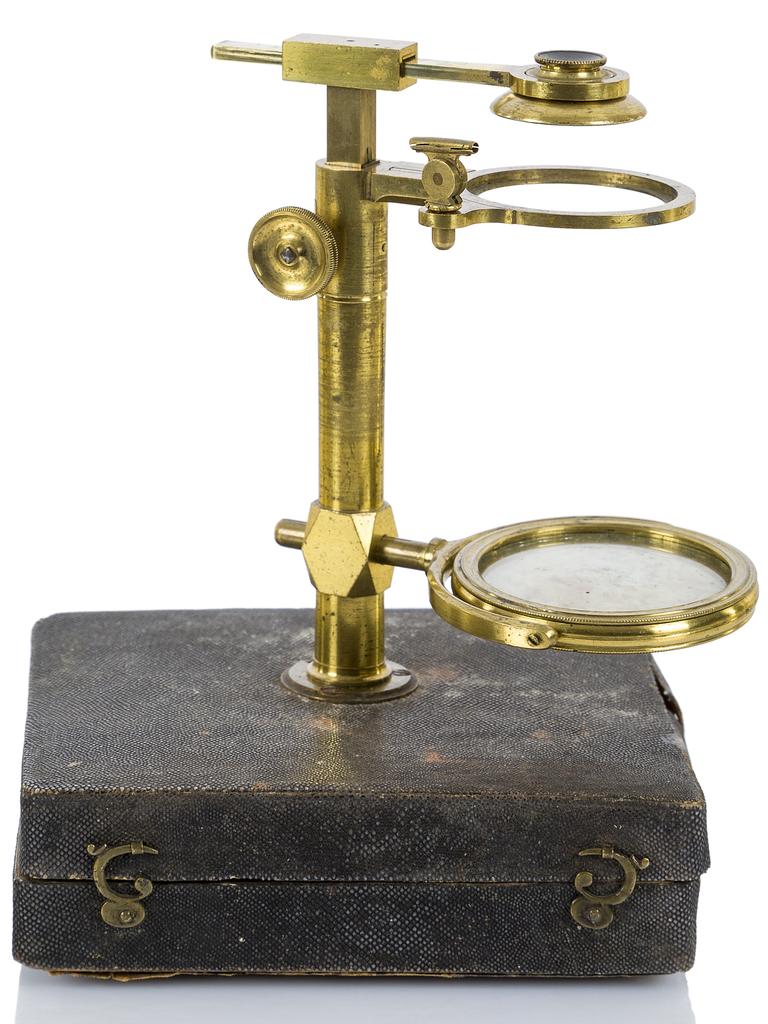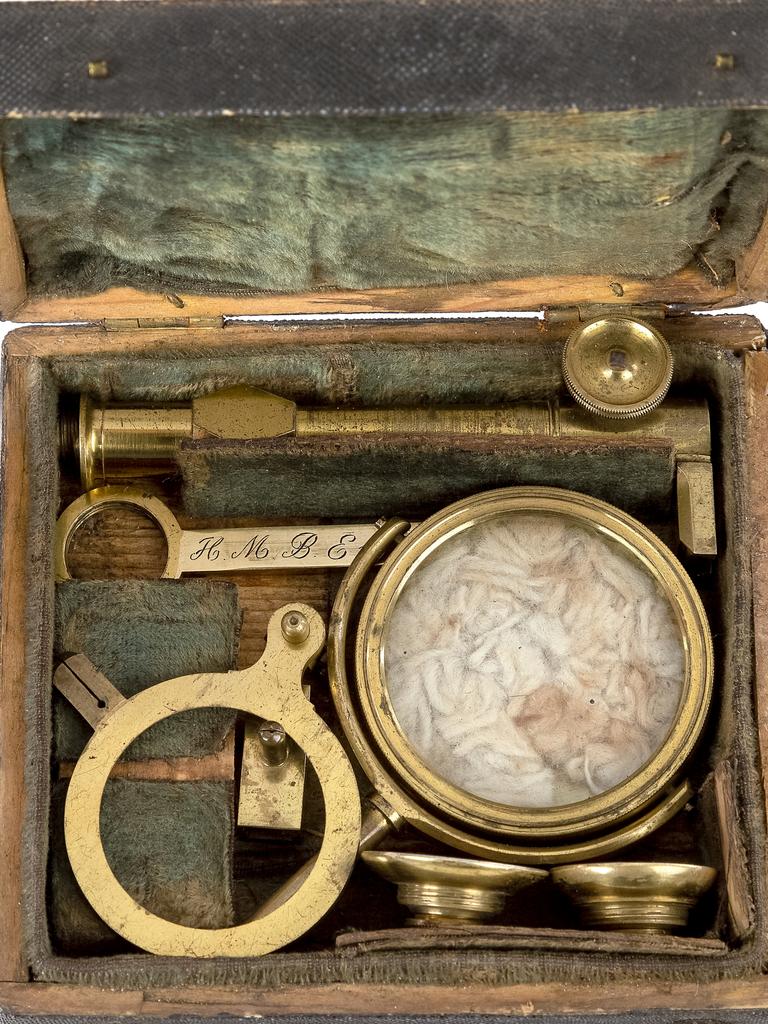‘Exceptionally rare’ microscope from the Endeavour up for grabs
An extremely rare 18th century microscope used by naturalist Joseph Banks on Captain Cook’s maiden voyage of discovery will go under the hammer in London after gathering dust for decades

READING LEVEL: GREEN
A microscope* purpose built for Captain Cook’s maiden* voyage of discovery in the 18th century is set to be auctioned.
The instrument proved crucial in the explorer’s record of Australia’s natural history, after his ship, the Endeavour, smashed into the Great Barrier Reef near Cairns in Queensland.
The mishap* grounded Cook for six weeks while the vessel was repaired.

But the disruption to his voyage of discovery became a lucky chance for his team to document the landscape, with naturalist* Joseph Banks discovering some original botanical* specimens along the 2300 km reef. They examined wet specimens of flora* and fauna*, some of which are now preserved in the Australian National Herbarium*.
The “exceptionally rare” Ellis type microscope – which cost £2, a considerable sum for the time given a junior housemaid earned £3 a year – was made in 1768 for the first Pacific voyage.
It will be auctioned in London on November 1, after being discovered in a dusty biscuit tin in an attic.

Specialist auction house Charles Miller Ltd expects it to fetch between $59,000 and $98,000 AUD.
“When Banks was offered a chance to accompany Cook, he set about acquiring the finest naturalists’ instruments and accessories he could,” said auction house founder Charles Miller.
“Although no list of his equipment has been found, the most important instruments were the optical items, including a three-foot (91.44 cm) achromatic* telescope for the study of passing coastlines and inaccessible places, four Ellis aquatic microscopes including this one and a compound microscope,” Mr Miller said.

“The aquatic microscopes in its fish skin cases were used to observe marine biology and as early forms of the dissecting microscope for entomology* and botany.
“Artefacts* from the first voyage of discovery are extremely rare indeed. It was lost after Banks died in 1820 and it was only privately realised* in 1950, unlocking an extraordinary history for a modern audience in 2022.”

James Cook’s first voyage aboard the Endeavour began on May 27, 1768. His three aims were to establish an observatory* at Tahiti in order to record the transit of Venus (when Venus passes between the Earth and the sun), to record natural history and continue the search for the Great Southern Land.

Cook reached the southern coast of New South Wales in 1770 and sailed north, charting Australia’s eastern coastline and claiming the land for Great Britain on August 22, 1770.
The Endeavour spent 18 dangerous and windy days and nights continuing north to the Great Barrier Reef.
The microscope was believed to be among items sold in the late 19th century. It was purchased by prominent* antiquarian* V B Crowther-Beynon, whose wife sold it after he died. In 1950 it was bought by the present vendor’s* father, who stored it away in his attic.

GLOSSARY
- microscope: scientific instrument of study that makes very small objects look bigger
- maiden: the first of something, when something is done or occurs for the first time
- mishap: setback, difficulty of some kind, accident
- naturalist: scientist expert in natural history including botany and zoology
- flora: plants of a particular region or period, listed by species and considered as a whole
- fauna: all of the animal life present in a particular region or time
- herbarium: collection of dried plant specimens systematically arranged for reference
- achromatic: something that is colourless
- entomology: scientific study of insects
- artefacts: man-made objects like tools or decorations that are of historical interest
- botany: branch of biology dealing with the scientific study of plant life
- realised: when an asset or something of value is sold
- observatory: building from which scientists watch and study planets, stars and weather
- prominent: important, famous, has some notable standing in society
- antiquarian: connected with the trade, collection and study of old, valuable or rare objects
- vendor: person or company with something to sell
EXTRA READING
Row over ‘discovery’ of Captain Cook’s shipwreck
Exploring the 250th anniversary of Captain Cook’s arrival
Cook’s Endeavour a vehicle for reflection
QUICK QUIZ
- What did the Endeavour smash into off the coast of Cairns in Queensland?
- How much did the Ellis type microscope cost at the time it was made?
- When did Captain Cook reach the southern coast of NSW?
- What were Captain Cook’s three aims when he set off on the maiden voyage?
- Which naturalist accompanied Captain Cook on the Endeavour?
LISTEN TO THIS STORY
CLASSROOM ACTIVITIES
1. Historical microscope
If you were at the auction of this important piece of history, and had authority to spend up to $100,000, how much would you pay for this microscope and which organisation would you donate it to?
How would you educate today’s children on the importance of Captain Cook’s voyage, while taking into account our First Nations people?
Time: allow 20 minutes to complete this activity
Curriculum Links: English; History; Personal and Social; Critical and Creative Thinking
2. Extension
How did these scientific instruments help Captain Cook’s voyage and what discoveries were made? Make a list below.
Time: allow 10 minutes to complete this activity
Curriculum Links: English; History; Science; Critical and Creative Thinking
VCOP ACTIVITY
Stretch your sentence
Find a “who” in the cartoon – a person or an animal. Write it down.
Add three adjectives to describe them better.
Now add a verb to your list. What are they doing?
Add an adverb about how they are doing the action.
Using all the words listed, create one descriptive sentence.

